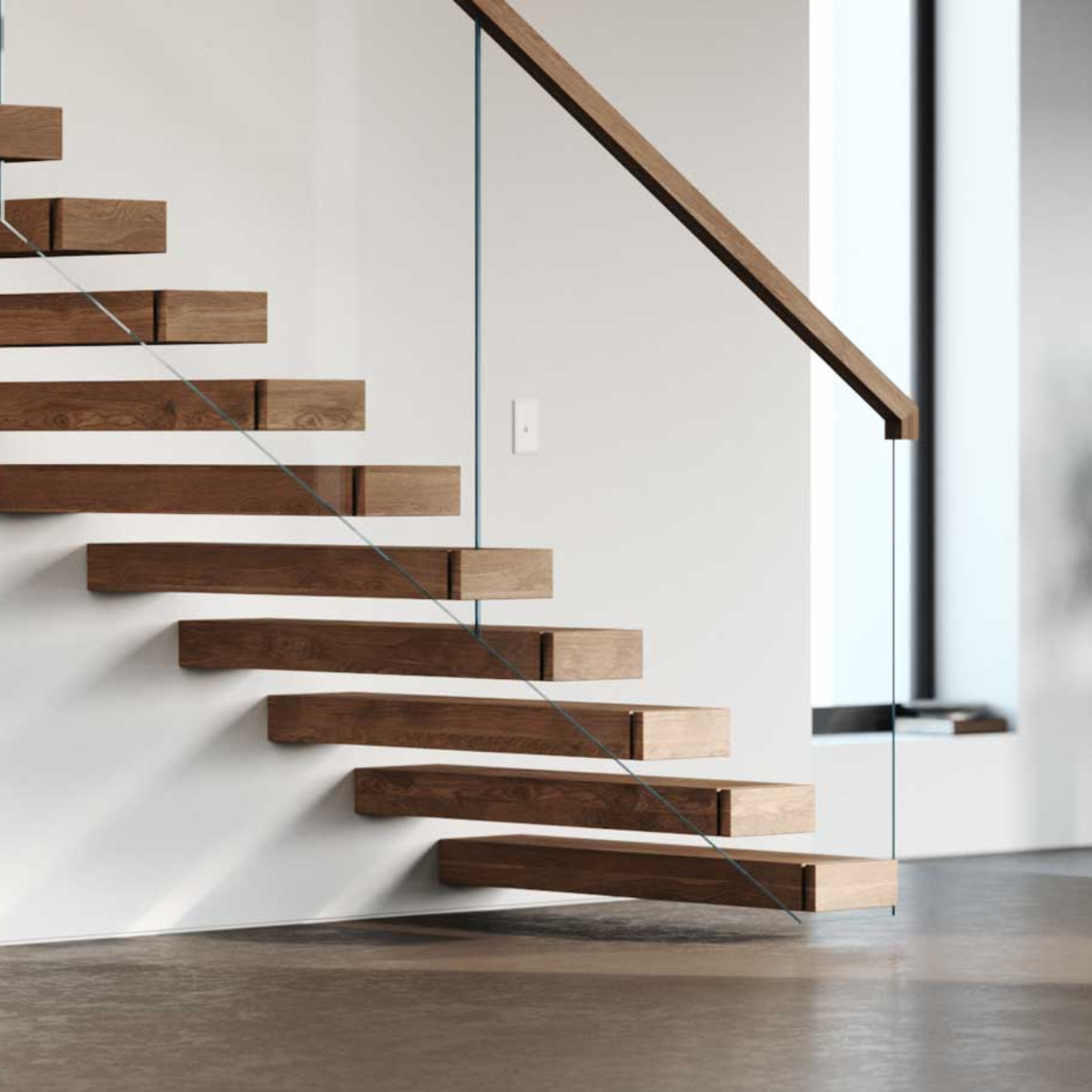
Types of Glass
Options, differences, and what's best for your railing
When choosing the best glass for your railing system, not all options are created equal. You need glass that’s not just safe and durable but also crystal clear and perfectly suited for your space. With so many choices available, how do you know which type is best?
Here, we break down the main options for glass railings, explore their unique characteristics, and help you decide exactly what your project needs.
Tempered Glass
Tempered glass, sometimes called toughened glass, is heated to about 1,100 degrees Fahrenheit and then rapidly cooled.
This process makes it super strong — 5 to 7 times stronger than standard (also called annealed) glass. If tempered glass breaks, it shatters into small, dull pieces, reducing the chance of injuries. Offered by Viewrail, it’s a great choice for most home railings, especially if they’re not placed above busy areas.
Strength: 5-7x stronger than standard glass
Breakage: Shatters into small, blunt pieces
Safety: High; safe for most residential applications
Clarity: High, minimal distortion
Scratch Resistance: High
Code: Suitable for residential, may require framing for safety
Typical Applications: Residential railings
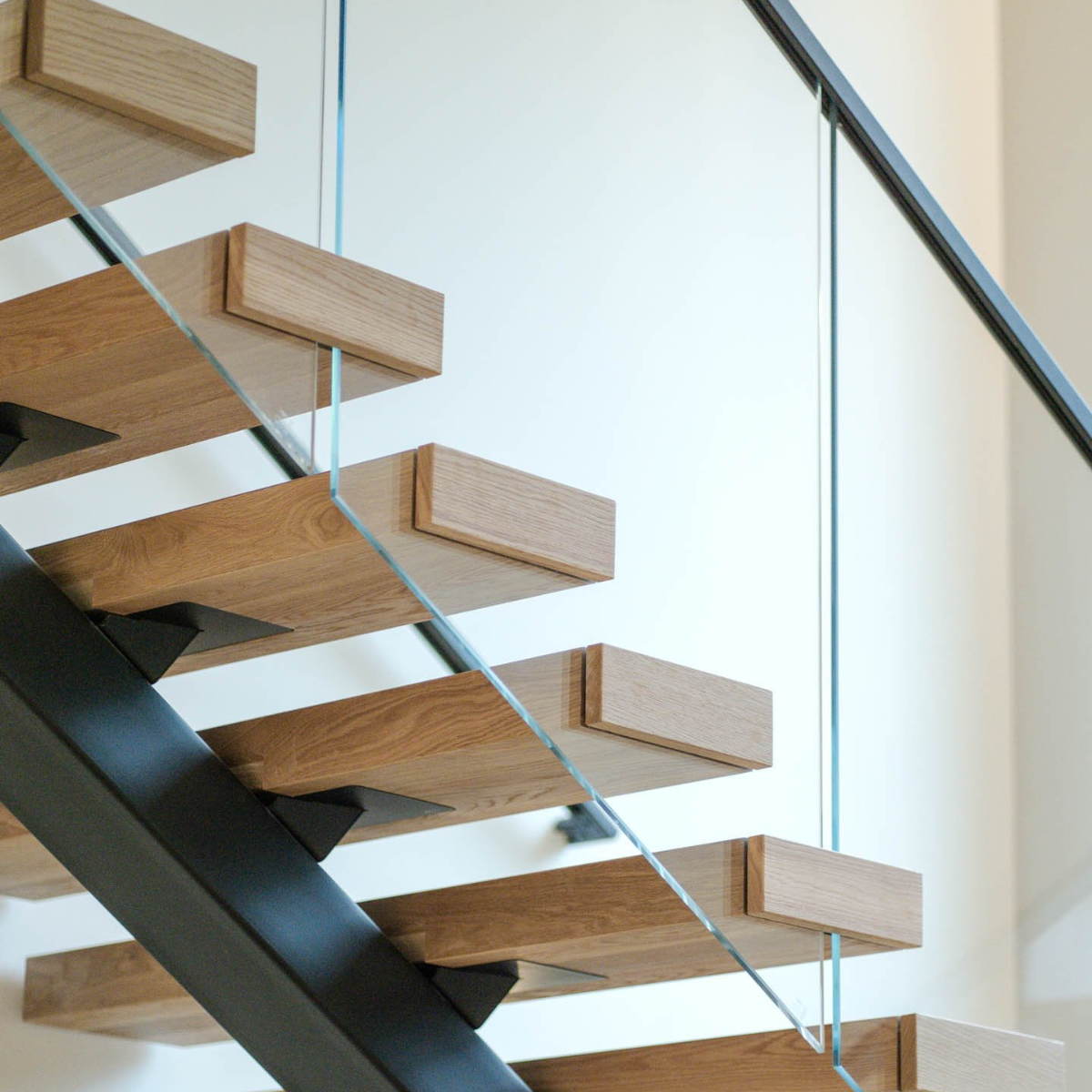
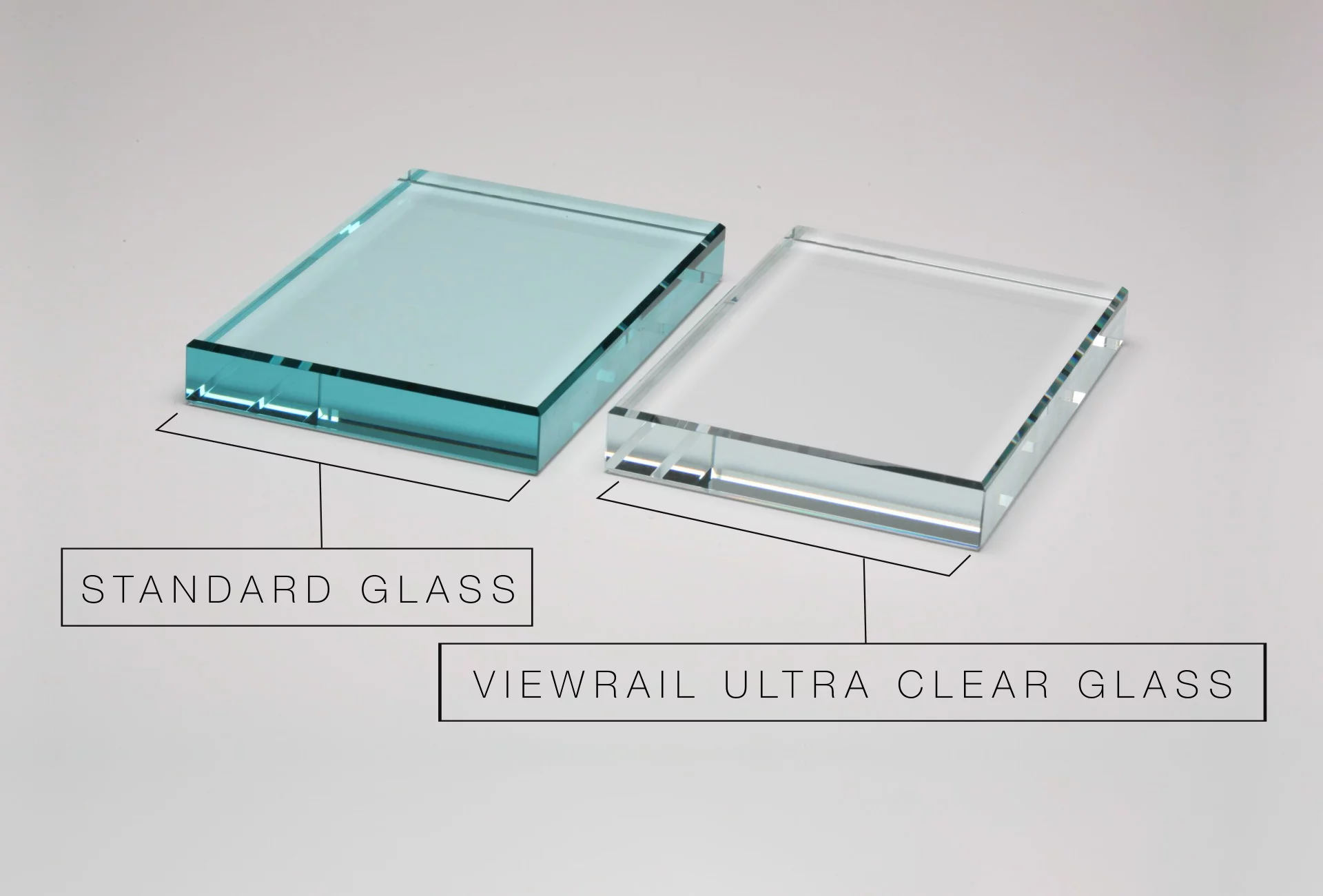
Ultra Clear Glass
Ultra Clear Glass is a type of tempered glass Viewrail offers that has extra clarity. Regular glass usually has a slight green tint, but Ultra Clear Glass is crystal clear. This means your views won’t have any color distortion — perfect for modern homes and sleek designs.
Benefits of Ultra Clear Glass:
- Crystal clear with no greenish tint
- Can be custom-made for your railing
- Ideal for contemporary styles
Laminated Glass
Laminated glass is made by bonding two or more glass layers together with a thin plastic layer in between. If laminated glass breaks, the plastic layer holds all the pieces in place. This keeps the glass panel together and prevents sharp pieces from falling out.
Laminated glass is another great choice for interior and exterior railings, and an option we offer at Viewrail. Because of it’s high strength and type of breakage, it’s usually required by building codes for commercial buildings or homes in high-traffic areas.
Strength: Very strong; layers held by interlayer
Breakage: Glass fragments held in place by interlayer
Safety: Highest; recommended for commercial and high-risk residential applications
Clarity: High, minimal distortion
Scratch Resistance: High
Code: Required for commercial and certain residential applications (e.g., hurricane zones)
Typical Applications: Commercial buildings, residential exteriors and high-traffic spaces
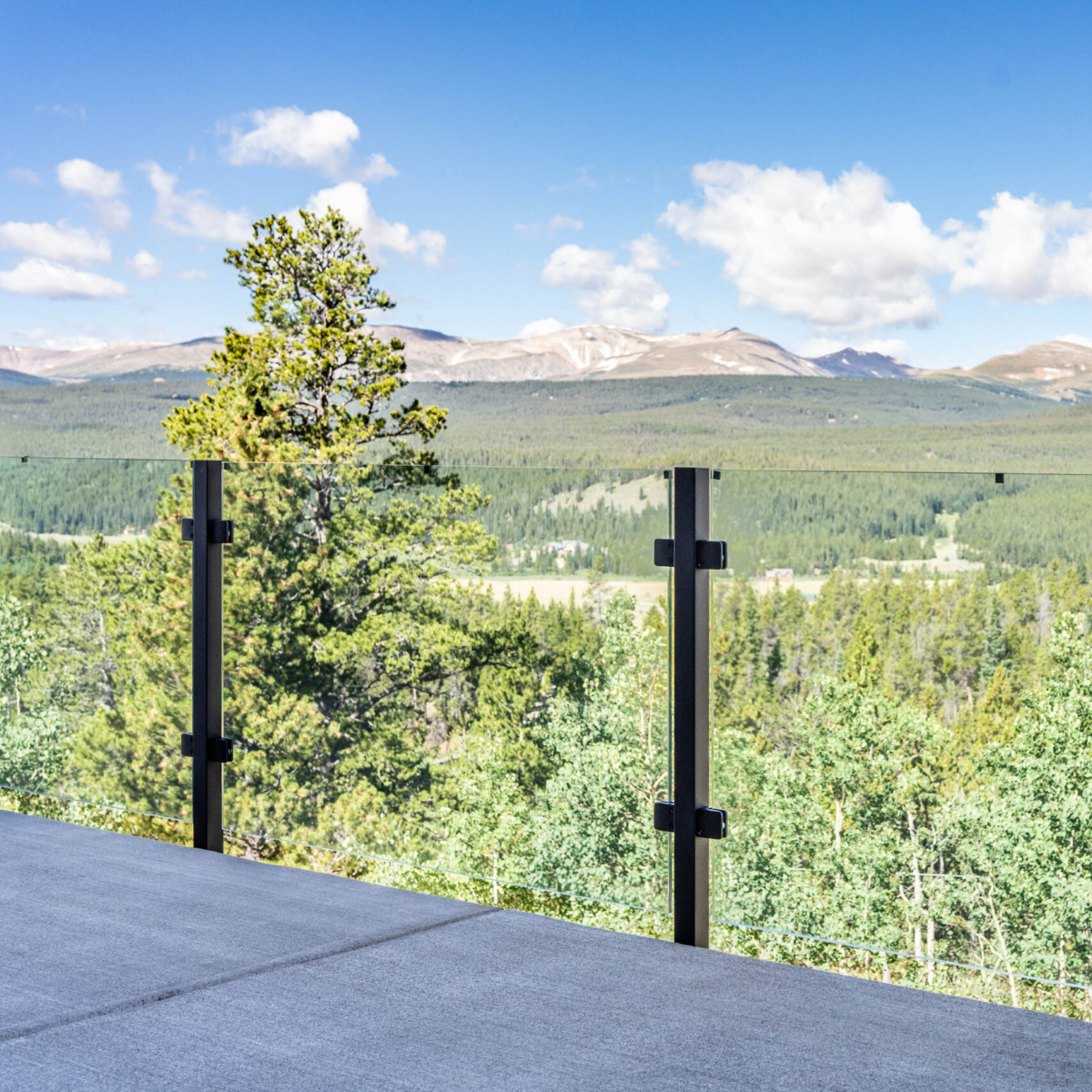
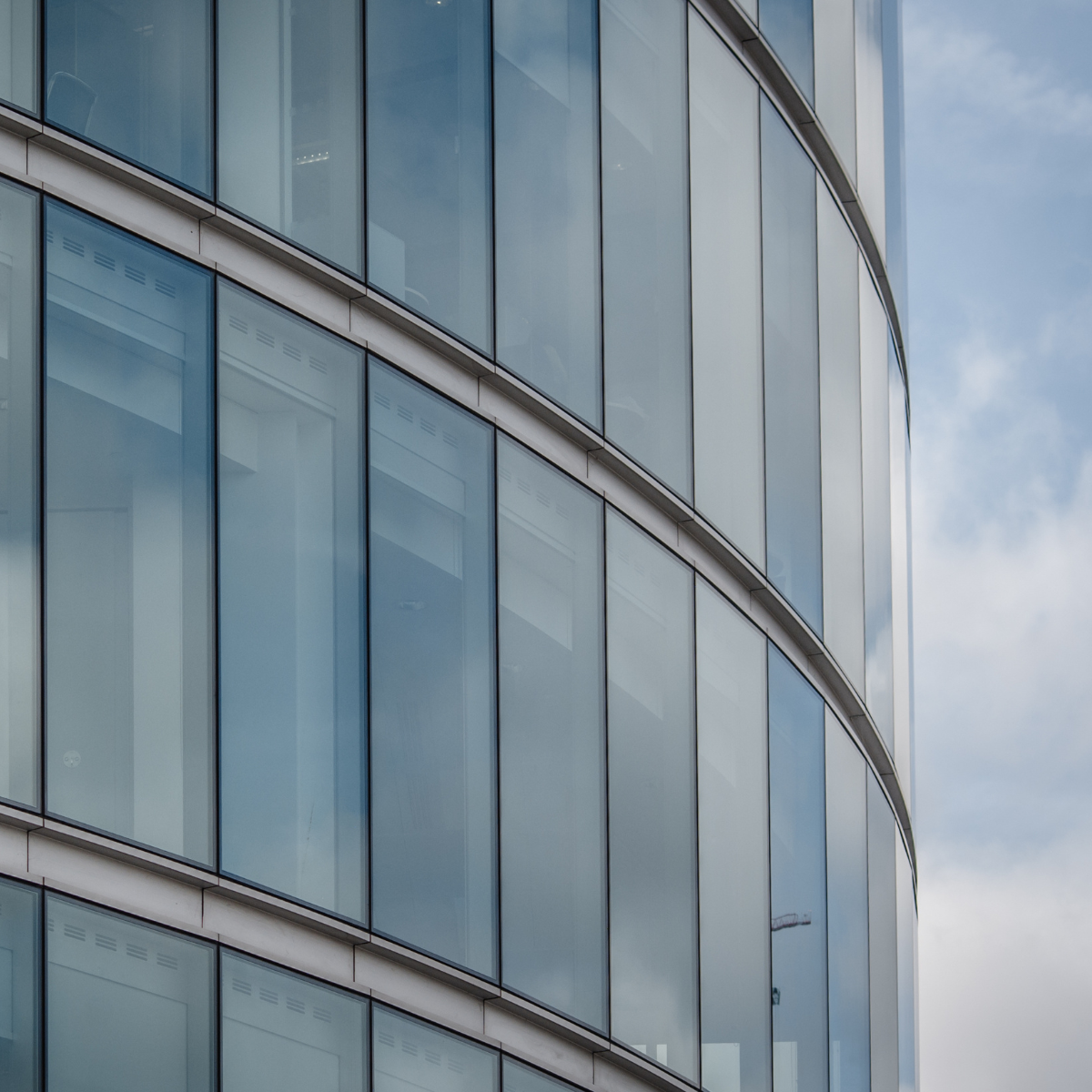
Heat-Strengthened Glass
Heat-strengthened glass is similar to tempered glass but isn’t cooled as quickly. It’s about twice as strong as regular glass but not as strong as tempered glass, one reason Viewrail doesn’t offer it in our own glass railings. If it breaks, the pieces are larger and sharper. It’s useful in specific situations where extra strength against heat and wind pressure is needed.
Strength: 2x stronger than standard glass
Breakage: Breaks into larger, sharper fragments
Safety: Moderate; safer than standard
Clarity: Good, minimal distortion
Scratch Resistance: High
Code: Occasionally specified in architectural designs
Typical Applications: Architectural features requiring moderate strength
Acrylic (Plexiglass)
Acrylic, commonly referred to by the brand name Plexiglass, is a clear, plastic-based material. It’s cheaper and lighter than glass and can bend slightly, making it useful in some designs. However, acrylic scratches easily and isn’t as durable or safe as glass, so it’s best for low-risk, budget-friendly projects. Most railing companies, including Viewrail, wouldn’t offer it as a solution for glass railings.
Strength: Moderate; weaker than glass
Breakage: Cracks or breaks into larger shards
Safety: Lower; risk of injury from sharp edges
Clarity: High, excellent visibility
Scratch Resistance: Low; scratches easily
Code: Limited compliance; not typically used in regulated railing applications
Typical Applications: Low-risk, budget-friendly residential projects
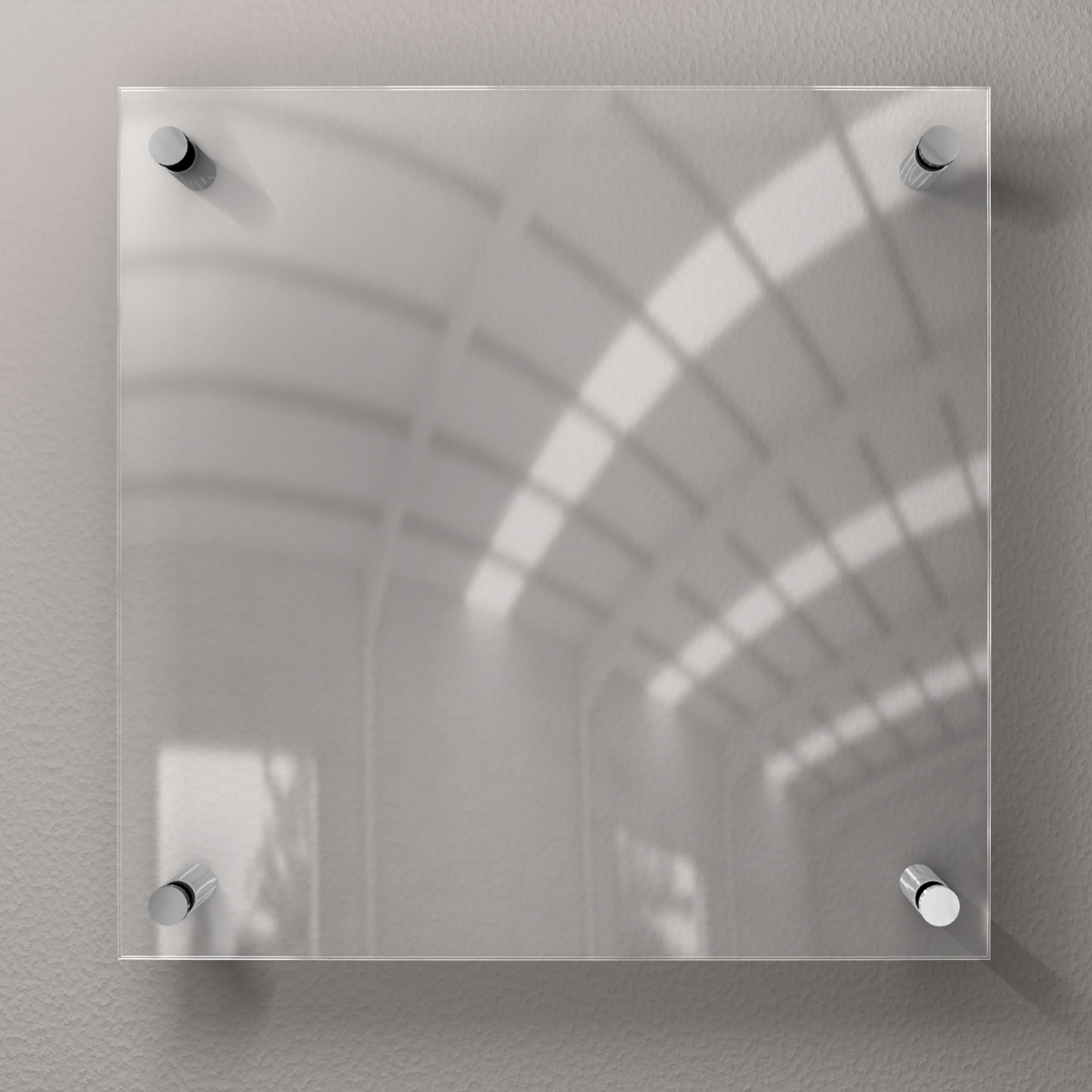
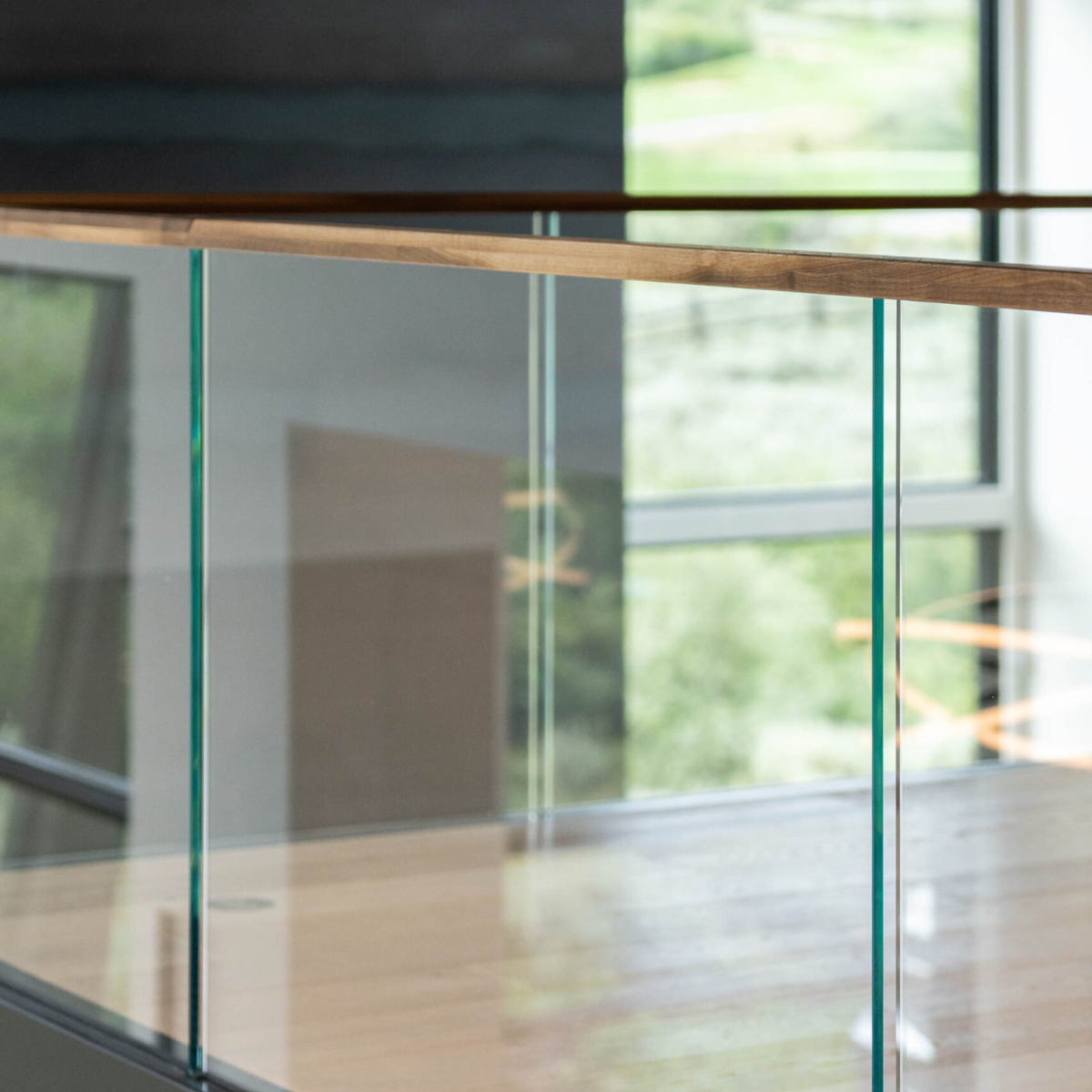
Choosing the Right Glass for Your Railing System
The best glass type for your railing system depends on several factors, including safety requirements, aesthetic preferences, and local building codes.
For most home railings that aren’t over busy areas, tempered glass is usually the best choice. For railings in commercial spaces or high-traffic areas, laminated glass is safest. It’s also worth knowing that we are seeing many coastal areas and other hurricane zones require laminated glass for exterior applications.
The bottom line? 99% of glass railings will use tempered or laminated glass. Those are the only types Viewrail offers due to their strength, clarity, and safety. Plus, we offer low-iron glass that is exceptionally clear. All of our glass is designed and manufactured to be perfectly integrated into your Viewrail railing system, giving you the best of all worlds.